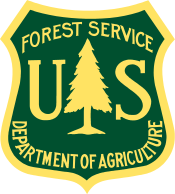The ability of winter grazing to reduce wildfire size and fire-induced plant mortality was not demonstrated: a comment on Davies et al. (2015)
| Title | The ability of winter grazing to reduce wildfire size and fire-induced plant mortality was not demonstrated: a comment on Davies et al. (2015) |
| Publication Type | Journal Article |
| Year of Publication | 2016 |
| Authors | Smith, AM |
| Secondary Authors | Talhelm, AF |
| Tertiary Authors | Kolden, CA |
| Subsidiary Authors | Newingham, BA, Adams, HD, Cohen, JD, Yedinak, KM, Kremens, RL |
| Journal | International Journal of Wildland Fire |
| Volume | 25 |
| Start Page | 484 |
| Keywords | fire and rangelands, fire effects and fire ecology, grazing, technical reports and journal articles |
| Abstract | A recent study by Davies et al. sought to test whether winter grazing could reduce wildfire size, fire behaviour |
| DOI | 10.1071/WF15163 |




